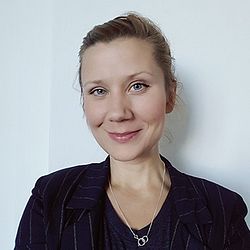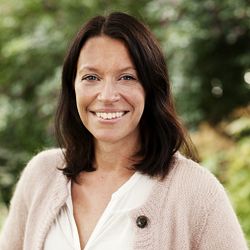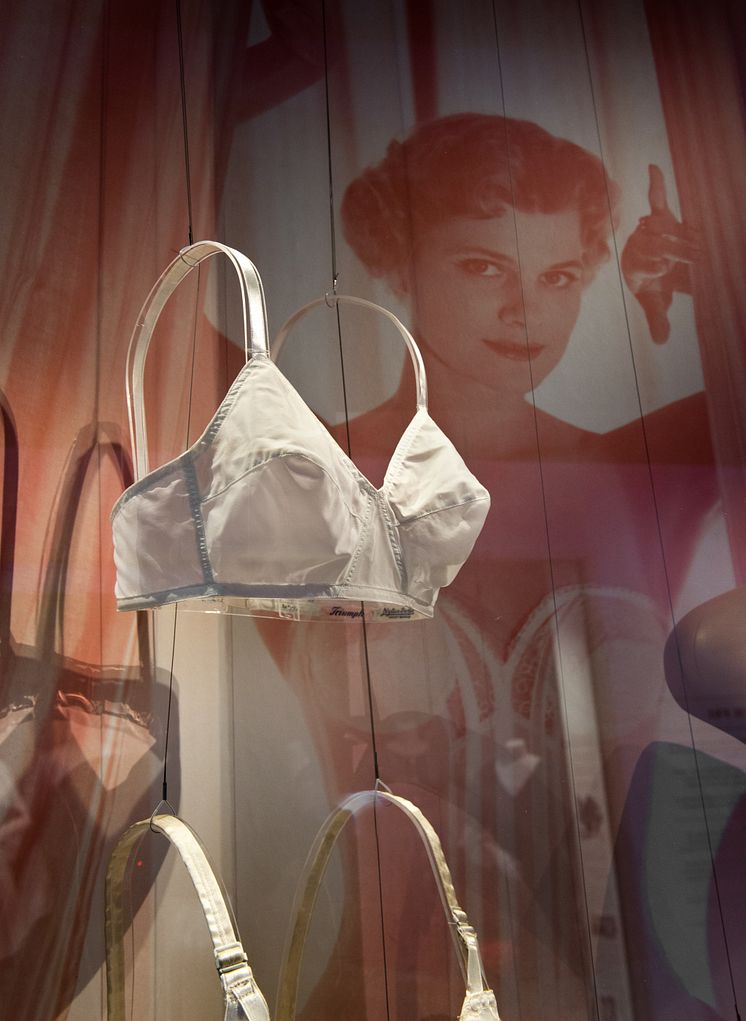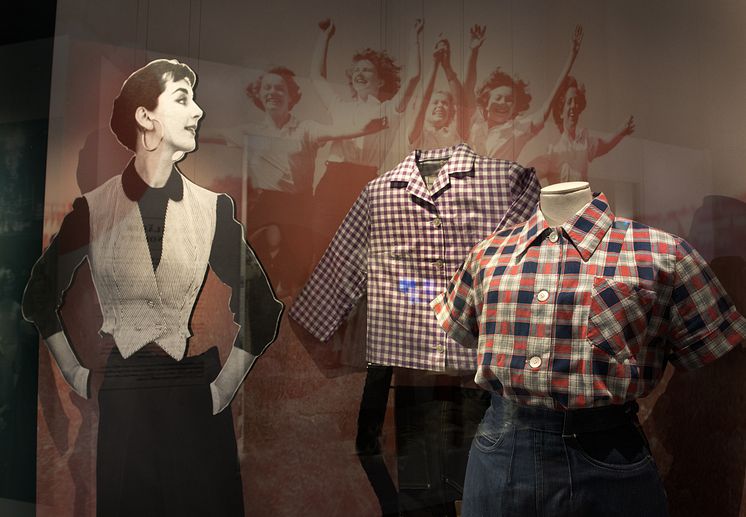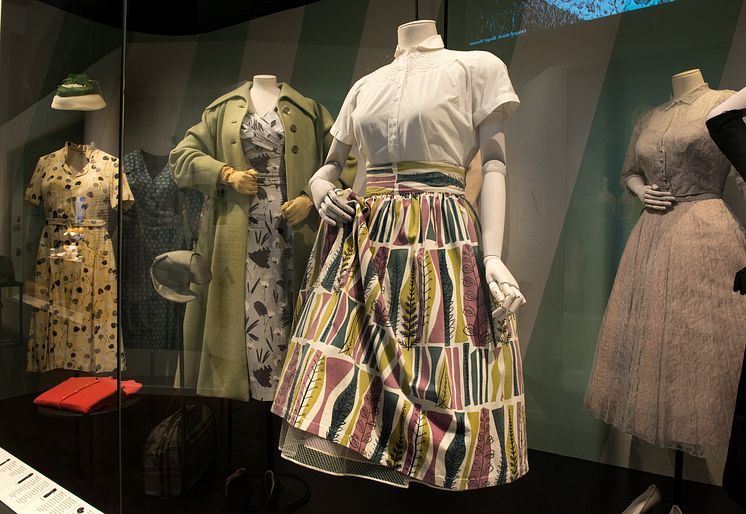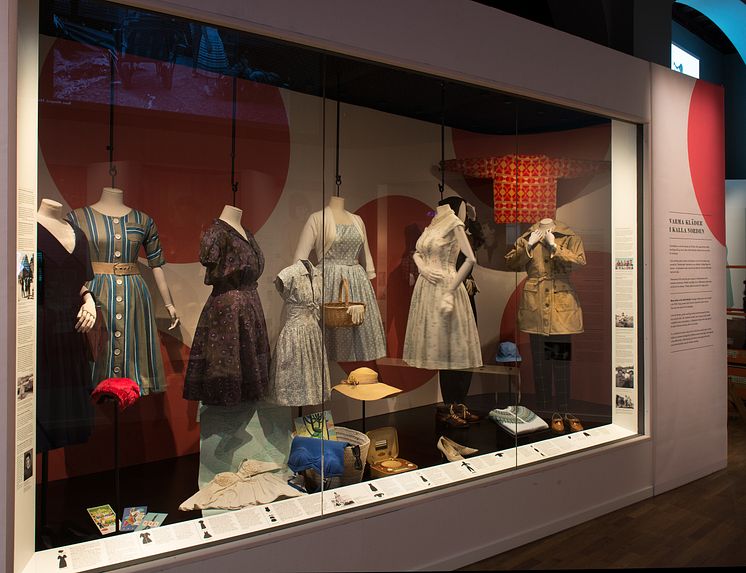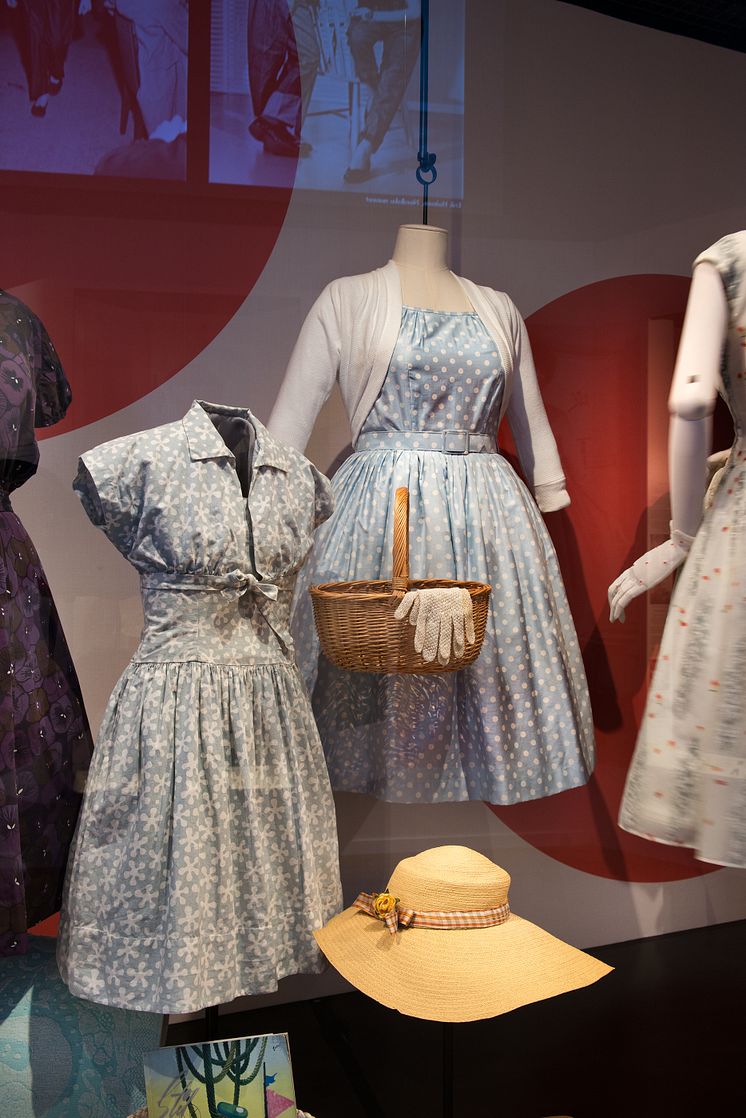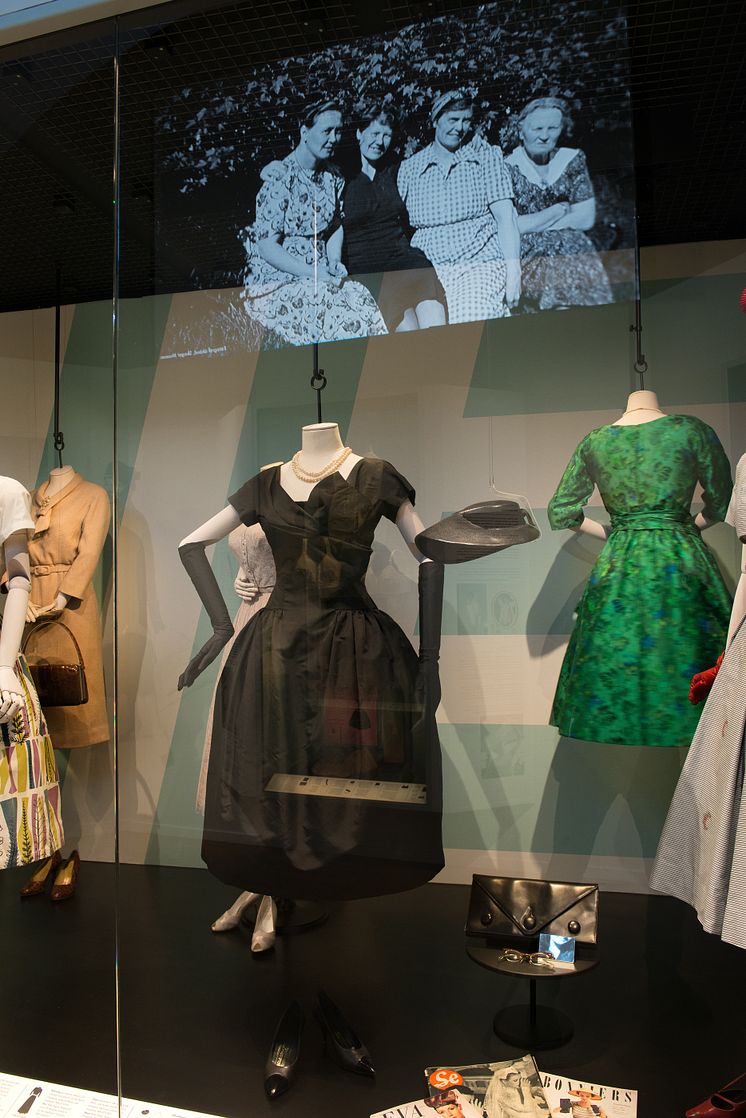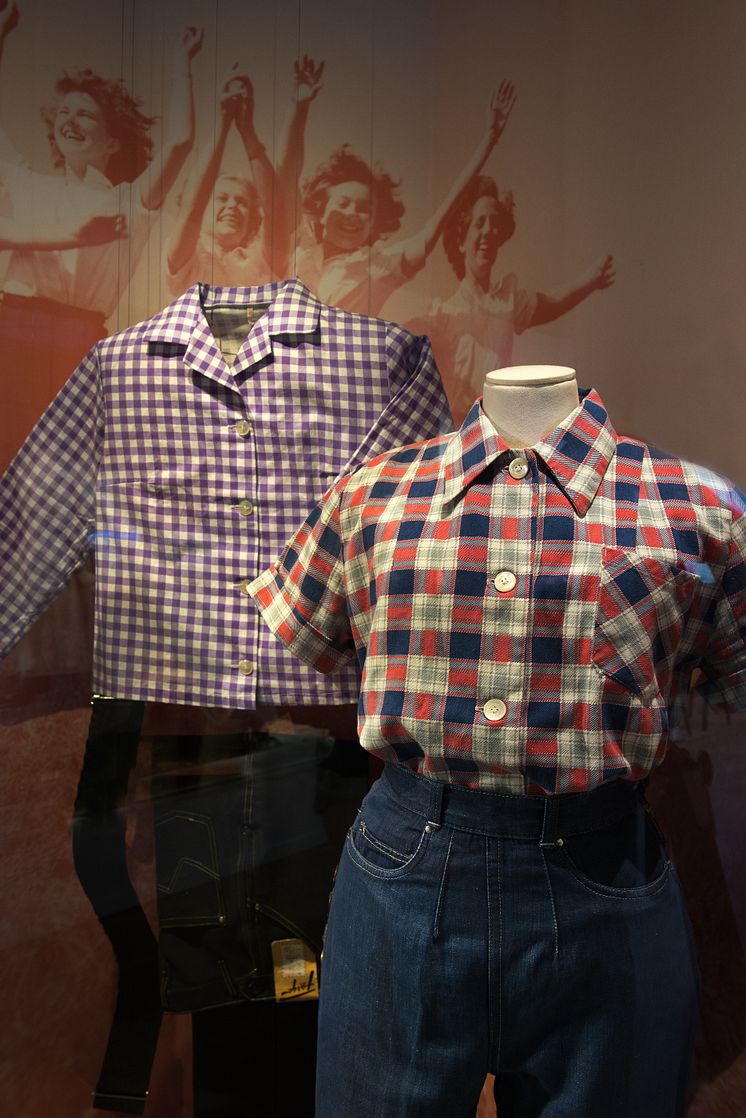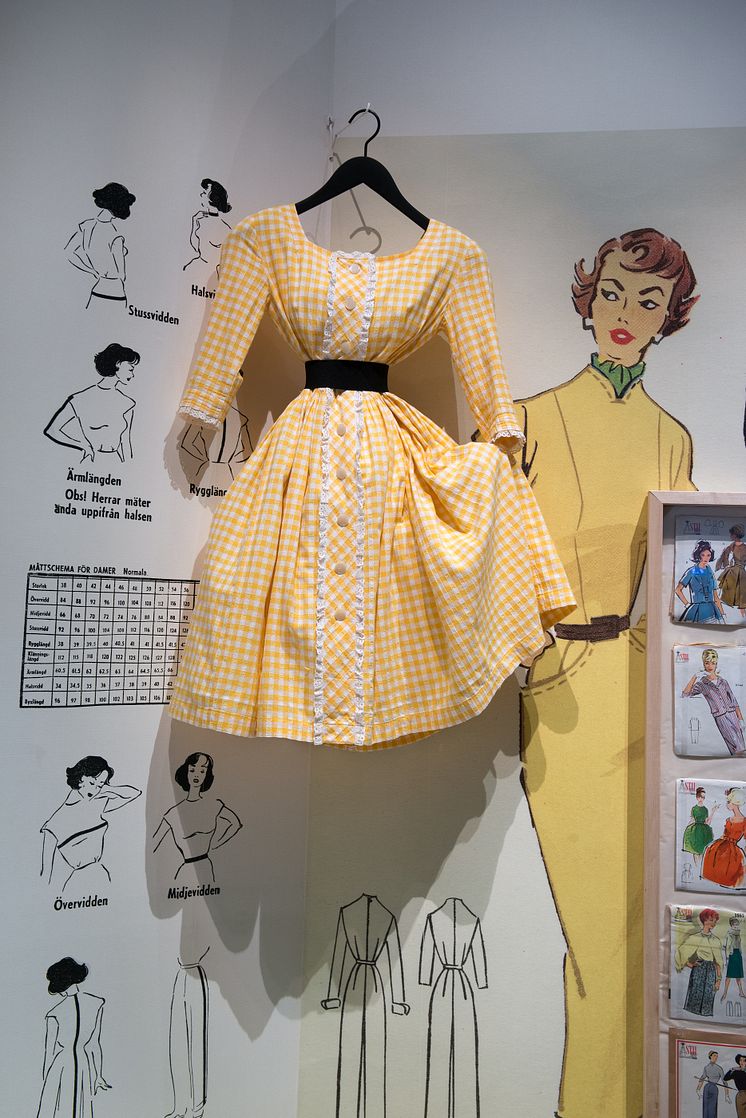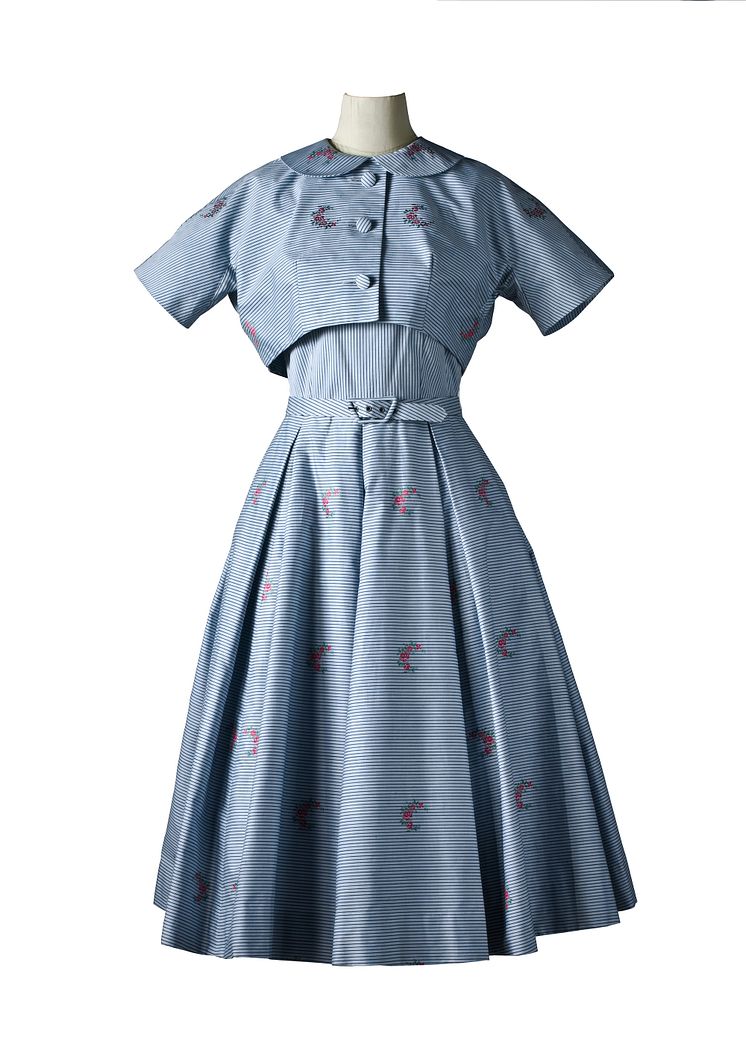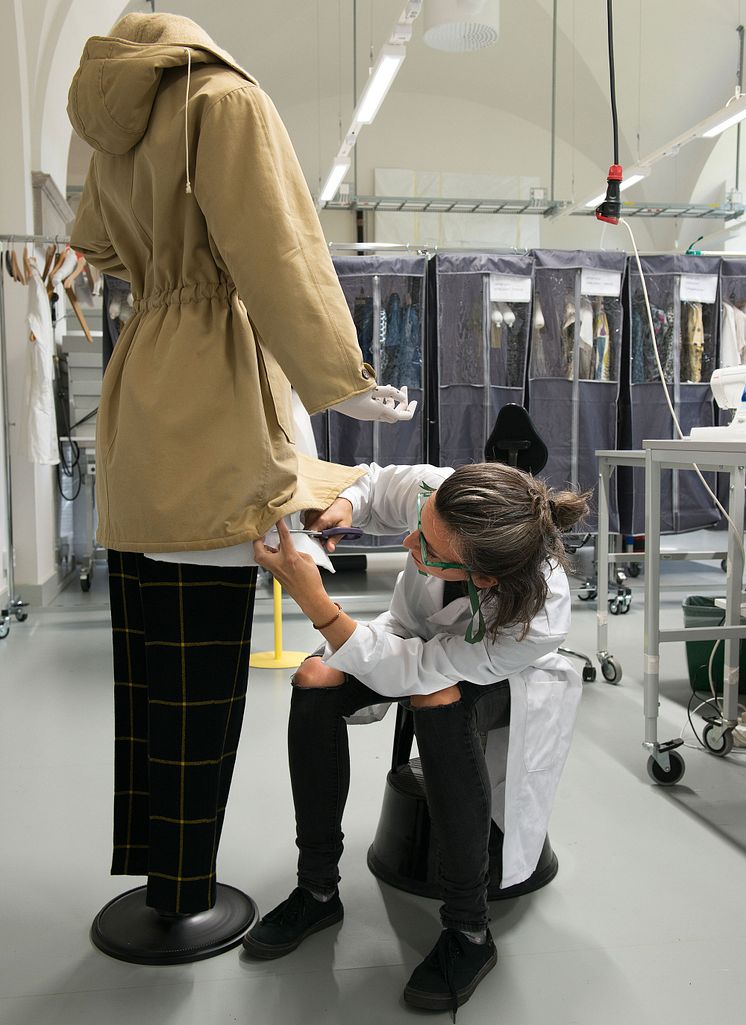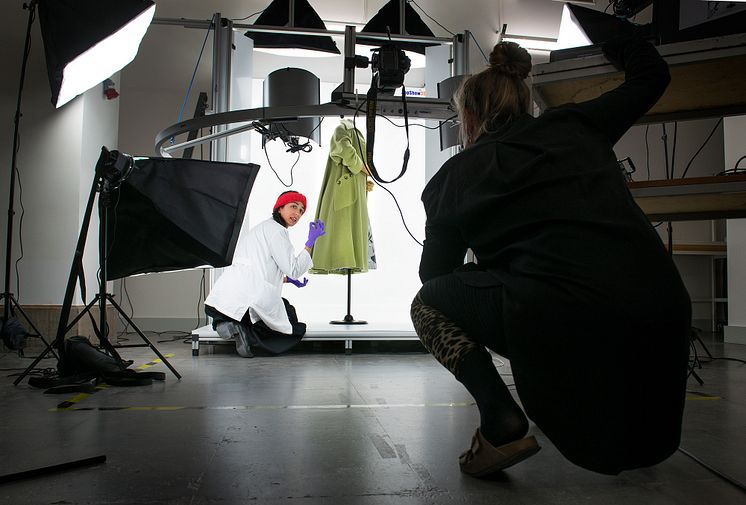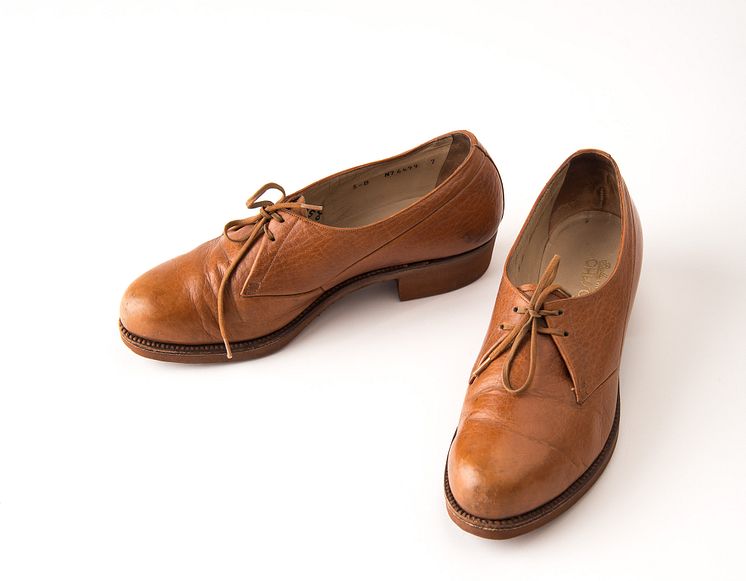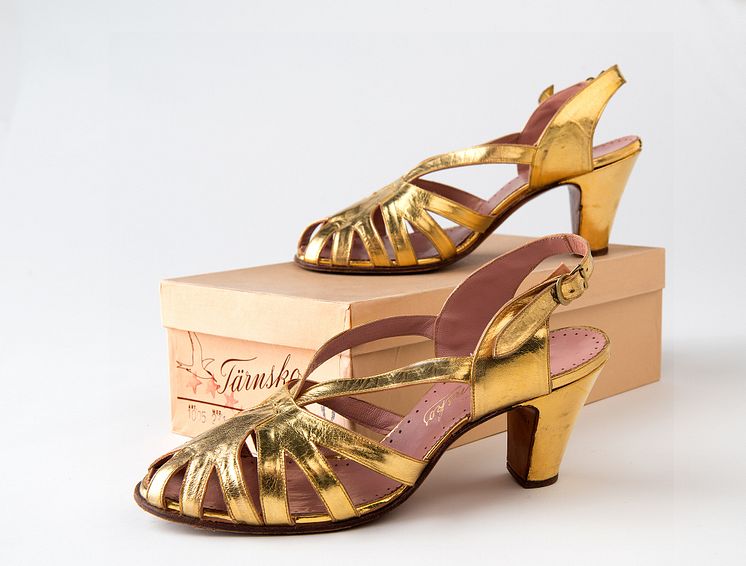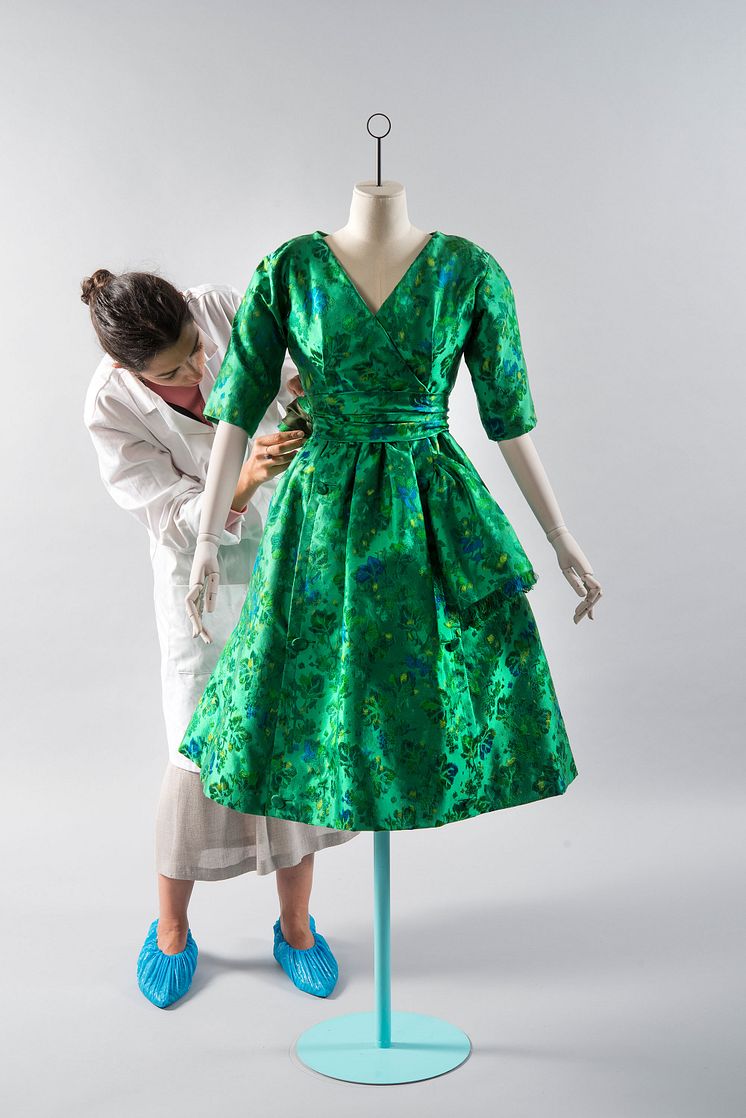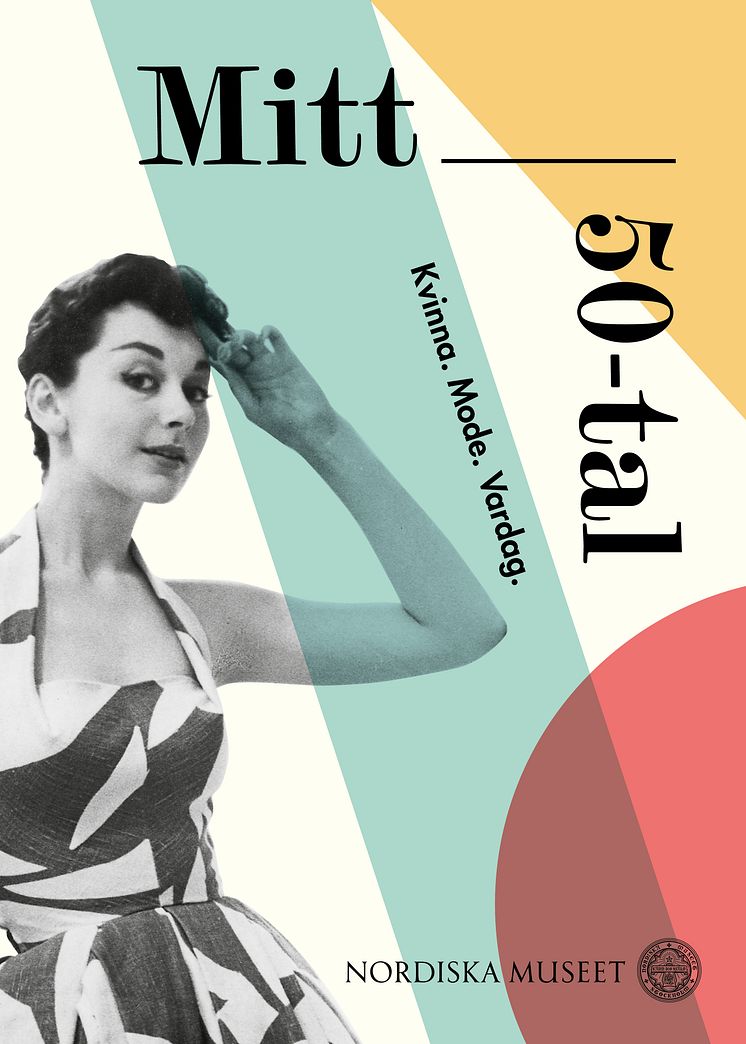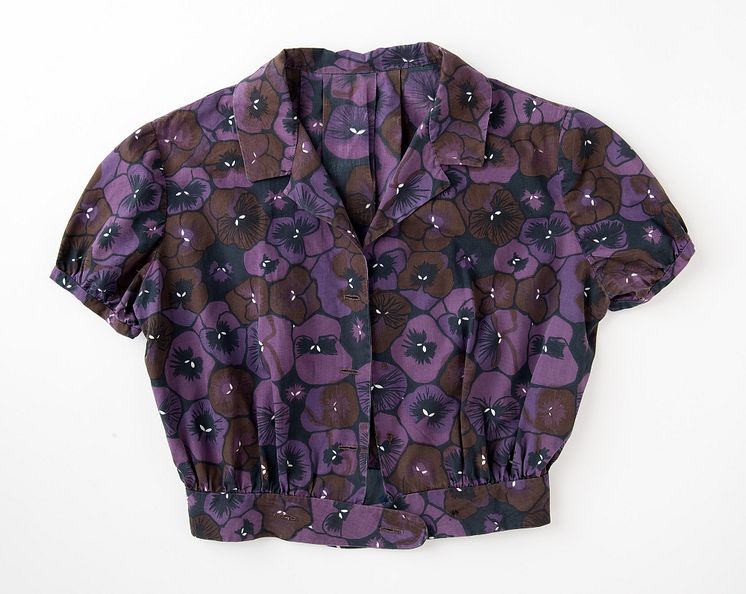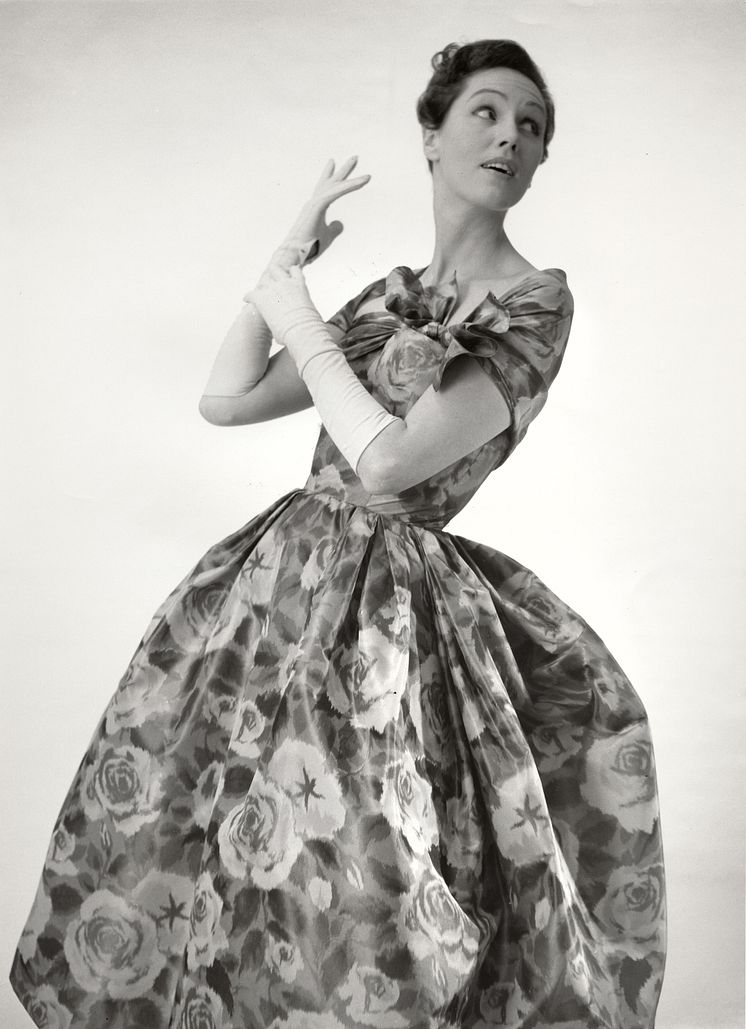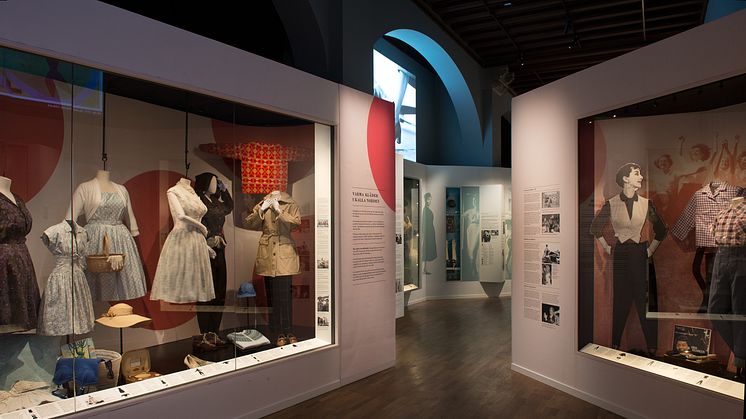
Nyhet -
My 1950s – Women, Fashion, Everyday Life
Nylon stockings, corsets, accentuated waists and flared skirts. But also elegant gloves, hat, large pearl earrings, jeans and checked shirt. My 1950s – Women, Fashion, Everyday Life offers visitors a broad perspective of fifties fashions, as well as some thoughtful insight into the social ideals of the time.
The 1950s was a decade of change. The Second World War was over, and American influence was sweeping across the Nordic region. There was more money around, more people were in work, and in terms of fashion the range of ready-made clothes was ever-increasing. Many women were also good at sewing, and shops and women’s magazines had plenty of patterns to choose from.
The My 1950s exhibition gives visitors an insight into every level of clothing, from everyday wear to the finest finery, worn by everyone from wealthy big-city fashionistas to women in rural areas. Eva’s evening dress, Inger’s first jeans, the shoes Karin danced in at the office party, Ruth’s Sunday best and the first Scandinavian Airlines stewardess uniform. Clothes that tell the story of the women who wore them, and the times they lived in.
Part of the exhibition also looks at our thoughts on 1950s fashions looking back. In short interviews Elsa Billgren (TV and radio host, blogger, vintage expert), Marina Kereklidou (designer and stylist) and Kristina Sandberg (author of a trilogy of novels about housewife Maj) share their views on 1950s fashion, lifestyle and relevance in a contemporary context.
Based on three themes, personal voices on clothes and 1950s ideals are interspersed with thoughtful texts on how cultural and social changes have affected Nordic fashion and our views on women. The exhibition aims to provoke thought and invite discussion on the role of the 1950s nowadays, and how the fashions, patterns and ideals of the time are noticeable in visitors’ everyday lives today.
Young and Free
In the 1950s a new youth fashion emerged, with long trousers and low shoes in stark contrast to the style ideal of the parent generation. Film stars like Brigitte Bardot and Audrey Hepburn were trendsetters. The knitted ‘Icelandic sweater’ became a new favourite that challenged the norm of feminine dresses with narrow waists. The exhibition includes Barbro’s memory of being given an Icelandic sweater by her mother for her 14th birthday in 1957. The theme of Young and Free also encompasses the holiday fashion that emerged as package holidays to warmer southerly climes grew in popularity: beach dresses in synthetic materials that were light and didn’t crease, and bathing costumes in the latest fashion.
Dream and Reality
The perfect silhouette could be achieved using corsetry, as seen for example in French fashion ideals like Dior’s New Look, pencil skirts and the A-shape in factory ready-made clothes, in home-made dresses – and in exclusive made-to-measure garments from studios such as the Märtha School and department store NK’s French section. Imported nylon became the height of fashion, and this contributed to cutbacks in the extensive domestic textile industry. Department store Nordiska Kompaniet, or NK, played an important role, with themed fashion shows and by always keeping up with the latest trends, also in teenage fashion. Fashion news from the outside world provided inspiration via films and commercials at the local cinema. Sewing patterns and women’s magazines were distributed across Nordic borders, to cities, towns and rural areas.
Home and Work
In the 1950s, many women worked in the home – temporarily or permanently, out of a sense of duty or voluntarily. But after the war, it was also possible for more women to enter working life. Women in uniform was nothing new, but in the 1950s women took their place in new uniformed professions such as the priesthood or being an air stewardess. The exhibition includes the first priest’s clothes for women, Nanna Svartz’s doctor’s coat and the Scandinavian Airlines air stewardess uniform. This part of the exhibition also shows more everyday garments that tell the story of women at home and at work – including textile and weaving teacher Gunhild, who made dresses for herself and her daughter Ingrid, preferably with fabric from Viola Gråsten.
My 1950s – Women, Fashion, Everyday Life is showing from November 10 2017.
Exhibition Producer
Matti Shevchenko Sandin
matti.sandin@nordiskamuseet.se
+46 (0)8-19 545 43
Expert Curator
Helena Lindroth
helena.lindroth@nordiskamuseet.se
+46 (0)8-519 546 40
Marianne Larsson
marianne.larsson@nordiskamuseet.se
+46 (0)8-519 547 25
Press Contact
Lotta Wallgren
lotta.wallgren@nordiskamuseet.se
+46 (0)8-519 545 17
